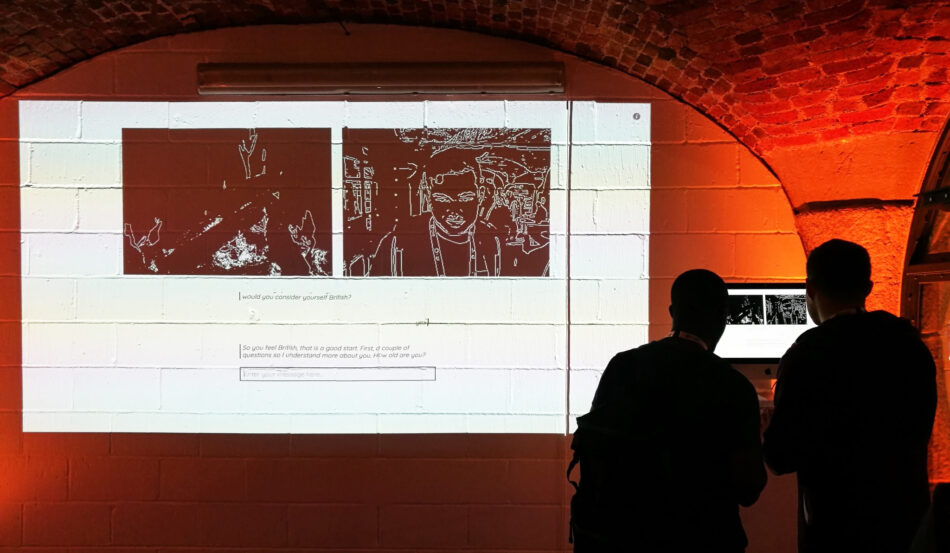
Britbot, 2018, interactive bespoke chatbot with sound + book, dimensions variable.
Britbot is a net-based chatbot exploring collective and individual national identity, inspired by dada poetry and quantum physics. The work was commissioned in 2017 by Sky Arts as part of their Art 50 programme. The work has been exhibited widely across the UK including at the Barbican, V&A and Sheffield Documentary Festival.
Britbot was an online voice or text activated chatbot that asked open-ended questions about ‘Britishness’ and through its conversations developed its own ideas of what constitutes Britishness. The bot’s initial training was based on the UK government’s citizenship test and the corresponding text-book Life in the United Kingdom 2017.
Introduced in 2005 by the Labour government, the then immigration minister Tony McNulty stressed, ‘This is not a test of someone’s ability to be British or a test of their Britishness. It is about looking forward, rather than an assessment of their ability to understand history’. The test, however, became notorious in 2011, when the coalition government changed it to focus extensively on British history and culture, with David Cameron famously flunking it live on the David Letterman show.
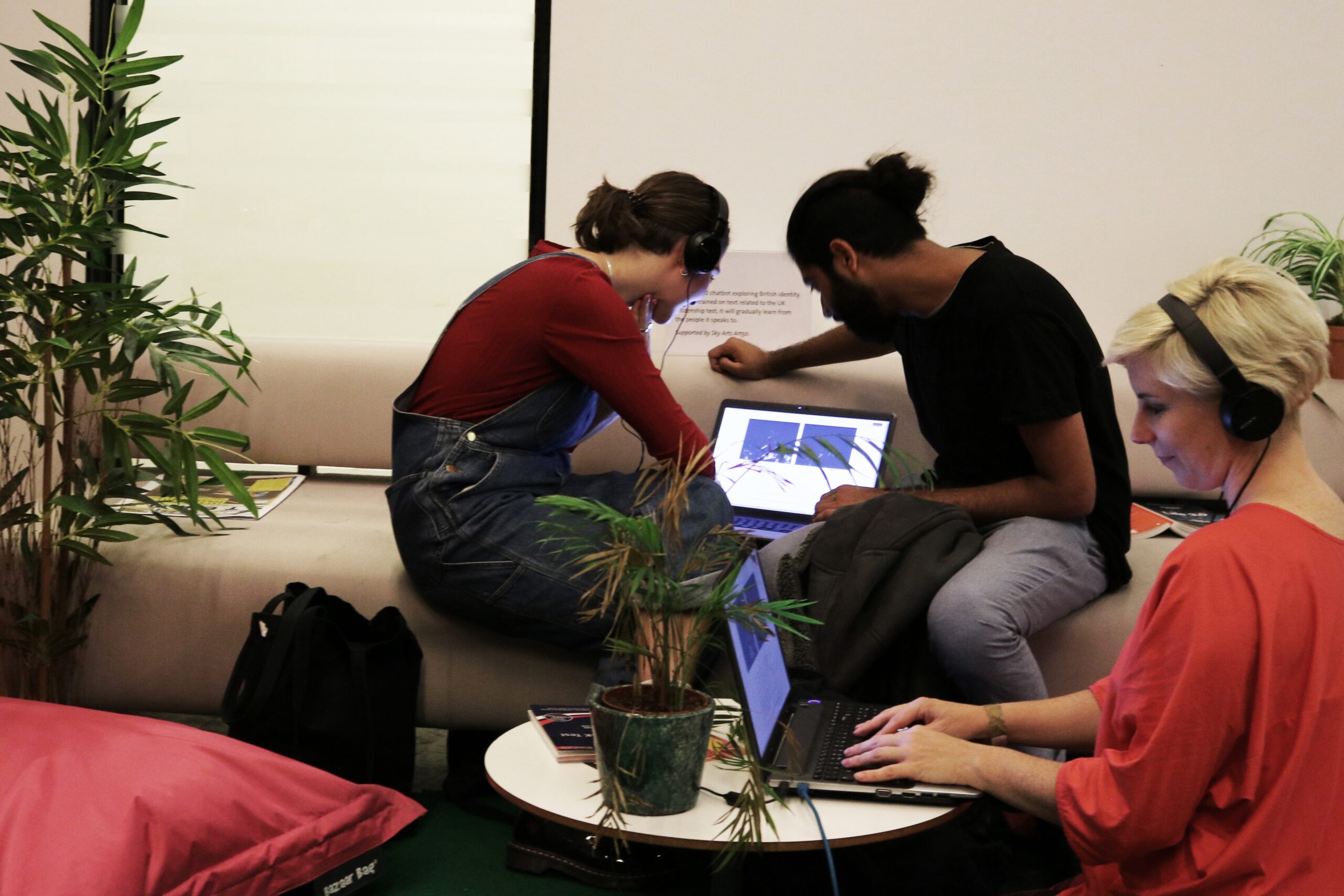

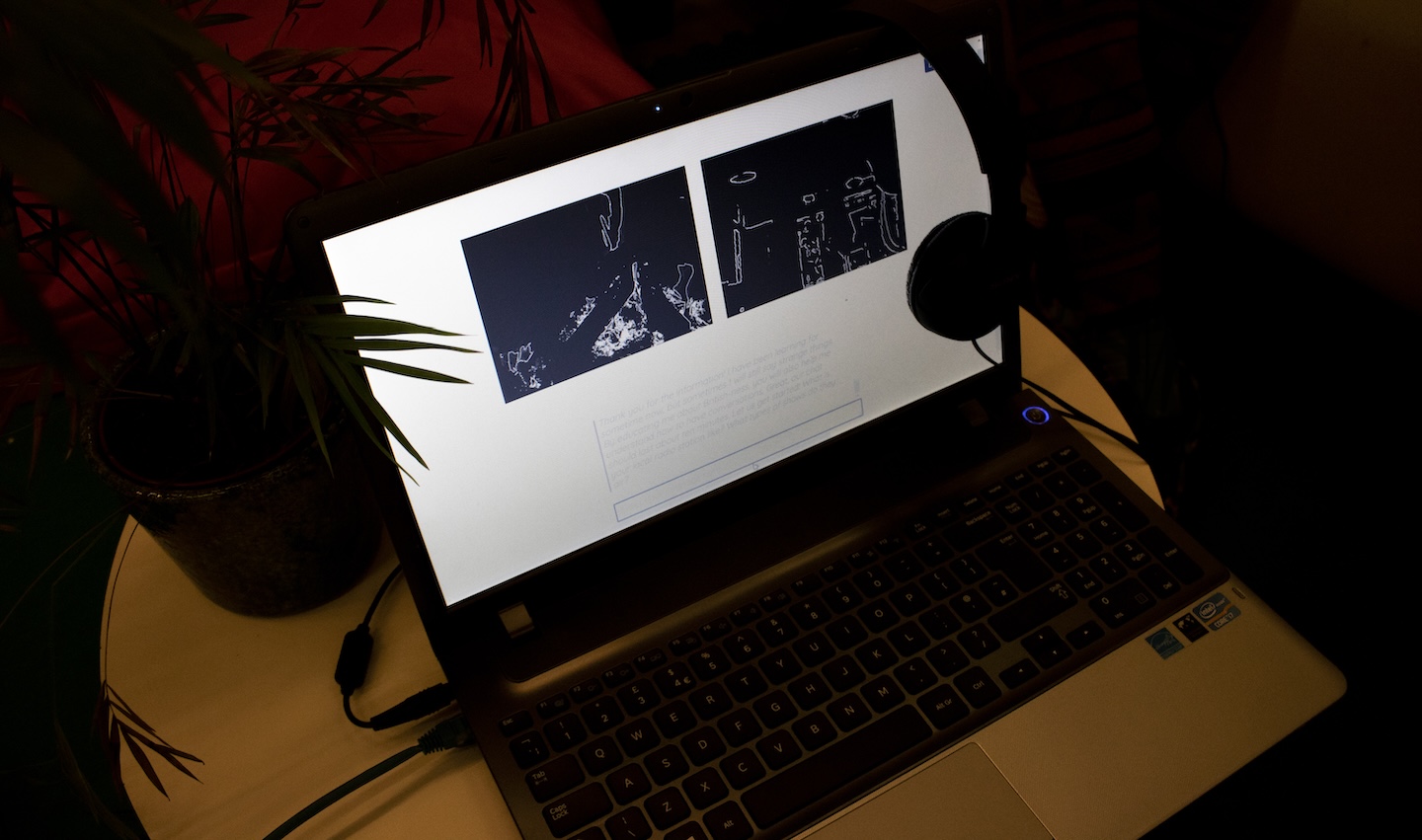
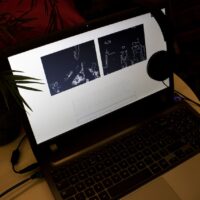
Britbot was live from July 2018 to July 2019 and learned from the people it interacted with. Its aim was to gather and reflect diverse views and insights about what the nebulous concept of ‘Britishness’ means today, becoming an algorithmic representation of the people it spoke to. When someone spoke to Britbot, it used machine learning techniques to sift through hundreds of articles and texts as well as all the statements people have said to the bot, to reply with an answer it thinks is best. The often surreal nature of responses encouraged users to reassess topics related to Britishness at a critical moment in British history.
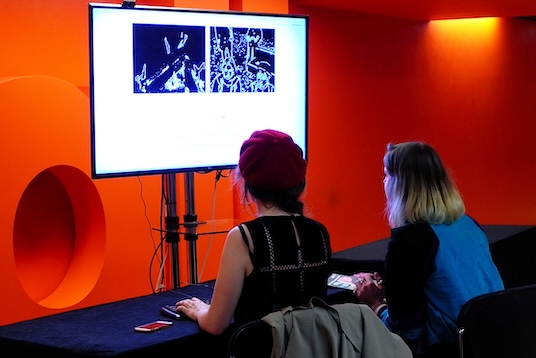
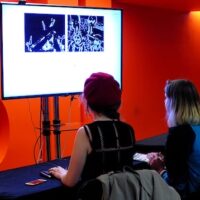
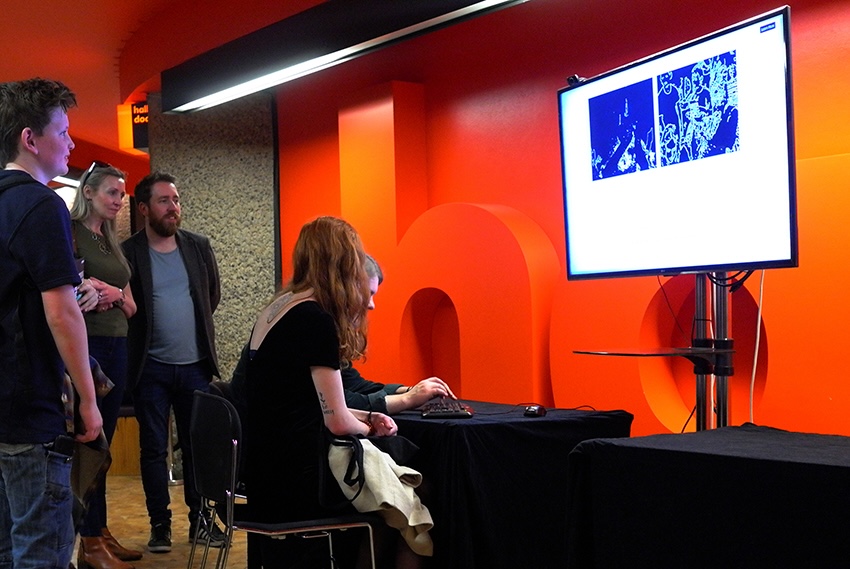
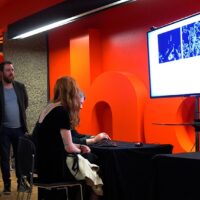
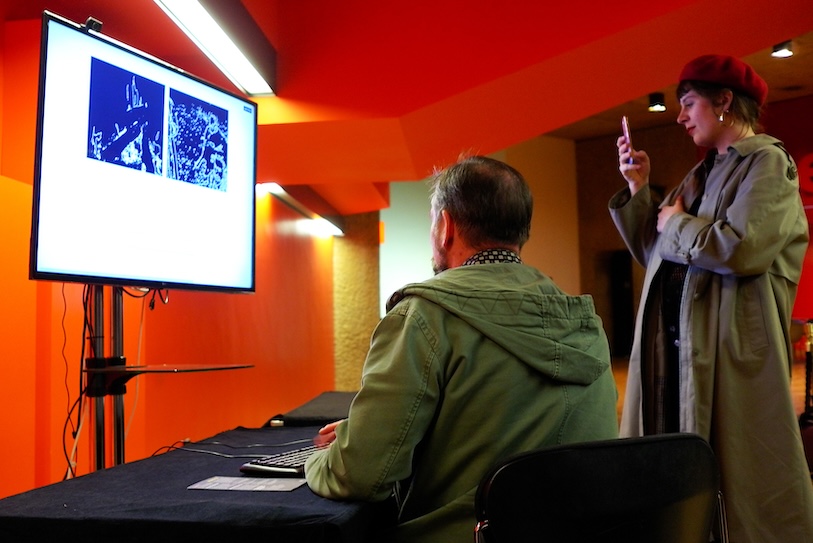
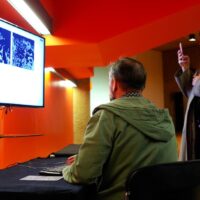
The computational algorithms behind the Britbot were developed by Kory Mathewson. The Britbot uses advanced techniques in natural language processing for speech-to-text voice recognition and text-to-speech voice synthesis. This allows the bot to hear and speak to the users. For dialog management, the system uses a combination of rule-based and purely-generative based methods. There is a defined conversational structure, but the system is able to improvise inside of the defined constraints. The language modelling is through Google’s Universal Sentence Encoder and the response generation uses a combination of semantic matching, word-level language generation, and post-generation re-ranking.
Britbot was commissioned by Sky Arts as part of Art 50 – a project to examine what it will mean to be British in post-Brexit Britain.
In partnership with The Barbican, Sage Gateshead and BALTIC Centre for Contemporary Art, Sky Arts launched Art 50 to invite artists of all kinds, from all walks of life, from all artistic genres, to create a piece of work which says something important about what it will mean to be British after Britain leave the European Union.
Related videos
